The small cemetery is idyllically located in the middle of a garden with mighty oaks and hazel bushes under the northern slopes of Omberg. The small mounds conceal around 80 graves of men from the Crown Labour Corps, i.e. prisoners who worked in Borghamn's limestone quarry. They quarried stone for the Karlsborg fortress on the western shore of Lake Vättern. A simple wooden cross has been erected on the site: "About 80 men from the Crown Labour Corps were buried here between 1860 and 1894. They broke the stone for Karlsborg Fortress."
Bockakyrkogården was the cemetery of the Crown Labour Corps from about 1860 to 1894. Originally, the cemetery in Rogslösa was used to bury convicts, but in 1854 the Rogslösa City Council decided that no more prisoners should be buried there. One of the reasons for this was the lack of space in the old cemetery. An extension was not made until the 1930s. In the mid-1850s, cholera was common and mortality in the Crown Labour Corps was exceptionally high. It is not known when the cemetery in Borghamn was opened. It is possible that the deceased were temporarily transported to Karlsborg and buried there before Bockakyrkogården was opened. It is possible that there are also graves in the oak grove outside the cemetery wall.
The people who worked in the quarry were called (grey) "bocks". The name of the cemetery derives from this. A "bock" was used to place explosive charges and the term 'bock' actually only applied to demolition soldiers. But in popular parlance, the term 'bock' was applied to anyone who worked in the quarry and was grey with dust.
The site was largely forgotten in the 1930s. No one cared for it then, but it was part of a pasture/grazing meadow. The vicar of Rogslösa parish at the time was Fritz Gerefeldts. He managed to bring about a restoration. Today, Karlsborg Fortress pays for the care of the cemetery.
The cemetery is 30 x 16 metres in size. The wall was added during the restoration after 1940 and is 0.7 metres high and 0.6 metres wide. A gravel path leads from the gate to a wooden cross on carved limestone. On the west side there are four rows of burial mounds, on the east side four and a half rows. A total of 70 burial mounds are visible. The mounds are 2 x 1.5 metres in size and 1-3 dm high.
The graves are anonymous, but from the registers you can see who died in Borghamn and why he was sentenced. The buried are not in the usual order (towards the east) but rise towards Karlsborg fortress.
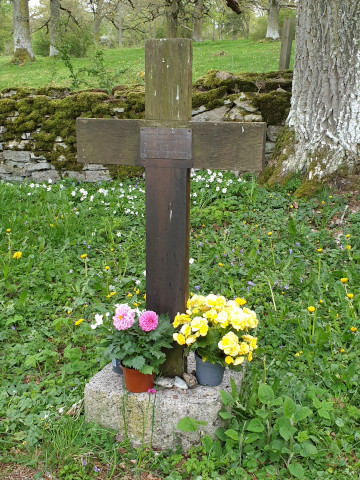 Cross on the Bocka cemetery
Cross on the Bocka cemetery
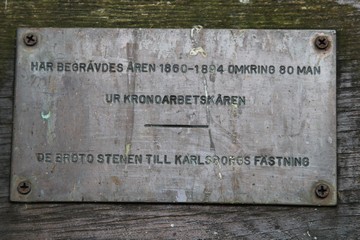 Inscription on the cross
Inscription on the cross
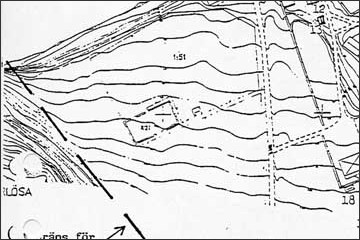 Location between Bockavägen and Omberg
Location between Bockavägen and Omberg
On the mound north of the entrance to old Borghamn are the dog graves, Oden's and Zenta's grave.
Like the Bocka Cemetery, the dog graves are sometimes decorated with flowers.
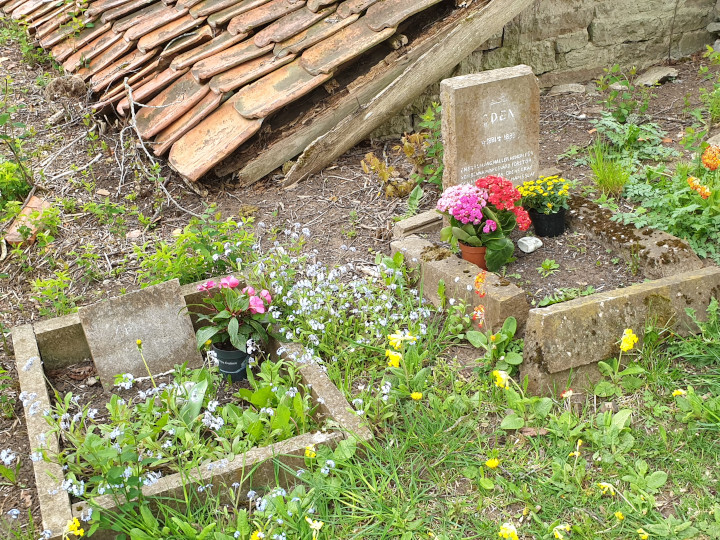 Dog graves in Borghamn (2020, Zenta (left), Oden (right))
Dog graves in Borghamn (2020, Zenta (left), Oden (right))
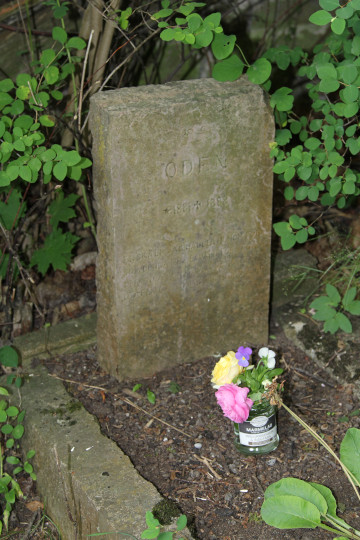 Oden's grave (2016)
Oden's grave (2016)
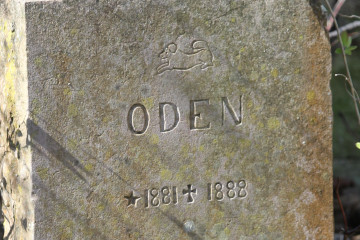
ODEN
* 1881 ✝ 1888
En skälm jag håller honom för
som denna minnsvård förstör
den nu är rest på Odens graf
utaf en gammal Borghamsslaf
A joker I hold him for
who this memorial destroys
it is now erected on Oden's grave
by an old Borgham slave
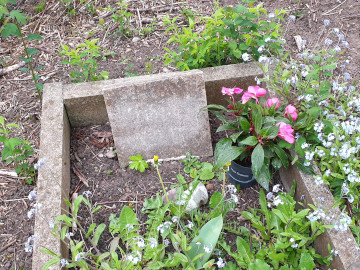 Zenta's grave
Zenta's grave
Zenta
* 1921 ✝ 1934
[Translation from Swedish:]
Abandoned cemeteries in Vadstena - and a real robber story
Within the borders of Vadstena Pastorate there are a number of abandoned cemeteries, i.e. cemeteries where people are no longer buried. Several are now built up or cultivated.
The largest deserted cemetery is in Borghamn and is beautifully situated on the slope of Omberg, with a view over Lake Vättern towards Karlsborg on the west side. In the Prisoner's Cemetery, or with a later name Bocka Cemetery, rests about 80 crown workers. These people were sentenced to hard labour and their task was to cut stone for the construction of Karlsborg Fortress. The cemetery was in use from 1854-1894. It is surrounded by a low limestone wall and a communal wooden cross has been erected in memory of the dead.
There have been several cholera cemeteries in the parish. During the cholera epidemics of 1834-1866, special cemeteries were established for victims of the plague. These cemeteries were built outside the church villages. In Rogslösa, a gravestone has been preserved on Peter Åsberg's resting place. He died of cholera in 1834 and was buried near his home in Freberga.
There is also a former private cemetery in Dal parish - Naddö griftegård. It was landowner Karl Hedmark of Naddö in Örberga who had a burial chapel built for his family and people registered on the farm. It was used on one occasion, when Hedmark's wife Anna was buried in 1926. Her coffin was later moved to the monastery cemetery in Vadstena.
The book also contains a real robbery story about meetings between Petter Eriksson from Undenäs in western Sweden and Jonas Larsson from Nässja in eastern Sweden. These encounters changed the lives of both of them.
Kulturguidningar i Dal offers guided tours of Bockakyrkogården as part of its guided tour programme in Borghamn and on the northern Omberg - for the public and for pre-booked groups.
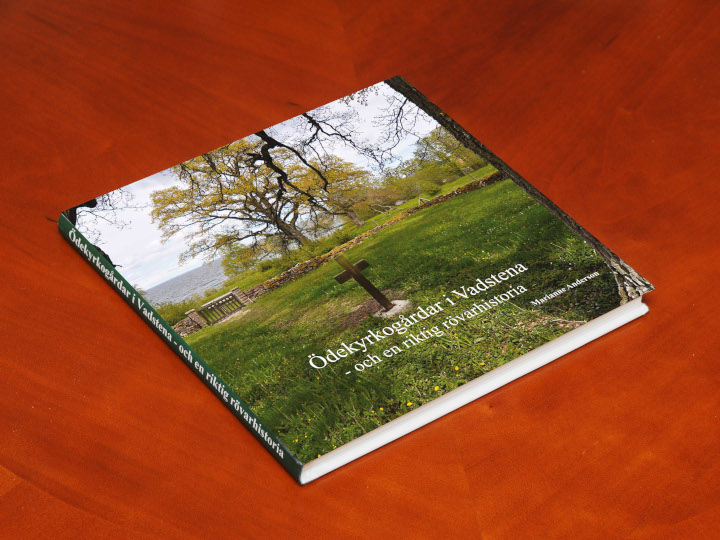
Marianne Anderson
Ödekyrkogårdar i Vadstena - och en riktig rövarhistoria
ISBN 978-91-519-6638-0
Published by Marianne Andersson
112 pages
Available at the book table at Vadstena Abbey Church, at the cemetery office, Lärkvägen 5, and from the author,